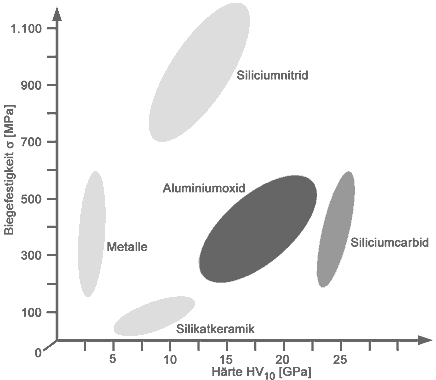5.3.5 Hardness
Hardness implies a high resistance to deformation
and is associated with a large modulus of elasticity. Technical
ceramic components are therefore characterised by their stiffness
and dimensional stability.
The high hardness of technical ceramics results
in favourable wear resistance. Ceramics are thus good for
tribological applications. Material type and microstructure
strongly influence the wear resistance.

Figure 89: A guide to the flexural strength
and hardness of selected materials
The high hardness of ceramic materials is
at the expense of a lack of plastic deformation (ductility)
that could absorb stress concentrations. The part could break
without warning (see figure 80).
Test procedures for determining the hardness according to
Vickers, Knoop and Rockwell are specified in DIN EN 843-4.
It is usual to quote the Vickers hardness HV
[MPa], although it is important to quote the test force (in
kg) as the result is very dependent on that. The values of
HV0,1 and HV50, for instance, may differ by about 30 %.
In practice, it has been found that quoting HV10 values is
useful for ceramics.
|

